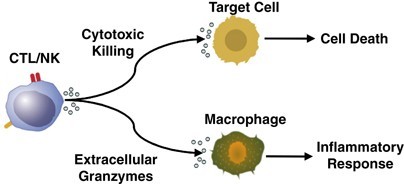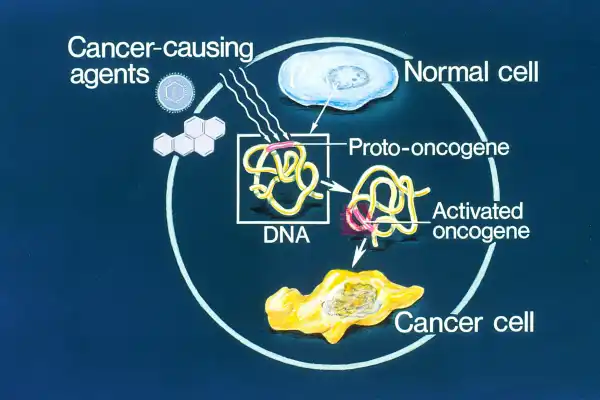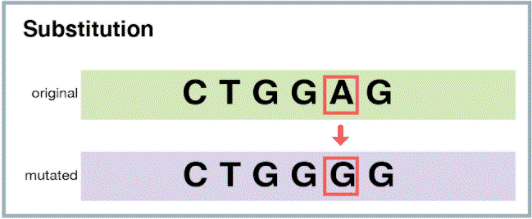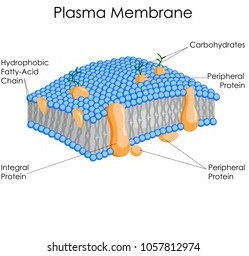Which cytotoxic lymphocyte granules contain serine proteases that induce apoptosis in target cells?.
A. Perforins.
B. Cytokines.
C. Granzymes.
D. Interferons.
Granzymes.
Granzymes are a family of serine proteases that are stored in and secreted from the cytotoxic granules of cytotoxic T lymphocytes (CTL) and natural killer (NK) cells.
They work in synergy with perforin, a pore-forming toxin, to induce apoptosis in target cells.

Perforin is necessary for the delivery of granzyme B to the target cell cytosol where caspase-dependent and -independent pathways to apoptosis are activated.
Perforins (choice A) are pore-forming toxins that work in synergy with granzymes to induce apoptosis in target cells.
Cytokines (choice B) are signaling molecules that regulate immune responses but do not directly induce apoptosis in target cells.
Interferons (choice D) are a type of cytokine that play a role in immune responses but do not directly induce apoptosis in target cells.
Therefore, the Correct Answer is C.
More Questions on TEAS 7 Science
-
Q #1: What is the normal flora?
A. A variety of microbial species found in certain areas of the human body.
B. A group of infectious parasites that cause diarrheal diseases.
C. The genetic material of bacteria housed within a true nucleus.
D. The protein coat surrounding the viral genome.
Answer Explanation
The normal flora refers to the microbial community that colonizes on the skin and mucus membrane .
Normal flora can be found in many sites of the human body including the skin, respiratory tract, urinary tract, and the digestive tract.

Choice B is incorrect because normal flora does not refer to a group of infectious parasites that cause diarrheal diseases .
Choice C is incorrect because normal flora does not refer to the genetic material of bacteria housed within a true nucleus .
Choice D is incorrect because normal flora does not refer to the protein coat surrounding the viral genome .
-
Q #2: Which of the following statements about bacteria and archaea is true?
A. A. Bacteria have a true nucleus while archaea do not
B. B. Archaea reproduce by spores while some bacteria reproduce by fission.
C. C. Bacteria can perform photosynthesis while archaea cannot.
D. D. Archaeal and bacterial flagella are constructed similarly.
Answer Explanation
Bacteria can perform photosynthesis while archaea cannot. Many types of bacteria can generate oxygen from sunlight through photosynthesis, while archaea cannot perform this process.
Choice A is incorrect because neither bacteria nor archaea have a true nucleus. Both are prokaryotic organisms. Choice B is incorrect because archaea reproduce by fission, fragmentation, or budding, while bacteria can produce spores and divide sexually or asexually. Choice D is incorrect because archaeal and bacterial flagella are constructed differently.
-
Q #3: Which of the following is true regarding the role of oncogenes in cancer development?
A. Mutations in oncogenes always result in the inhibition of cell division.
B. Oncogenes are only found in human cells and not in any other organism.
C. Genes that regulate cell division are not found in any viruses.
D. Genes that regulate cell division can become oncogenes when mutated.
Answer Explanation
The correct answer is choice D.
Genes that regulate cell division can become oncogenes when mutated.
Oncogenes are mutated genes that can contribute to the development of cancer.

In their non-mutated state, everyone has genes which are referred to as proto- oncogenes.
When proto-oncogenes are mutated or increased in numbers due to DNA damage, the proteins produced by these genes can affect the growth, proliferation, and survival of the cell, and potentially result in the formation of a malignant tumor.
Choice A is incorrect because mutations in oncogenes do not always result in the inhibition of cell division.
Instead, they can contribute to the development of cancer by affecting cell growth.
Choice B is incorrect because oncogenes are not only found in human cells but can be present in other organisms as well.
Choice C is incorrect because genes that regulate cell division can be found in viruses. -
Q #4: A nurse is reviewing the results of a patient’s DNA sequencing test, which was performed to diagnose a genetic disorder. The nurse notices that the patient has a mutation in one of the bases of the DNA. Which of the following is the correct term for this type of mutation?
A. Deletion
B. Insertion
C. Substitution
D. Inversion
Answer Explanation
The correct answer is choice C. Substitution.
A substitution mutation is a type of point mutation where one base in the DNA sequence is replaced by another base.

Choice A is incorrect because a deletion mutation occurs when one or more bases are removed from the DNA sequence.
Choice B is incorrect because an insertion mutation occurs when one or more bases are added to the DNA sequence.
Choice D is incorrect because an inversion mutation occurs when a segment of DNA is reversed within the chromosome.
-
Q #5: What is a control group used for in scientific studies?
A. To establish causality by isolating the effect of an independent variable.
B. To establish the effect of a dependent variable on an independent variable.
C. To control the impact of extraneous variables on the dependent variable.
D. To control the impact of extraneous variables on the independent variable.
Answer Explanation
A control group is used in scientific studies to establish causality by isolating the effect of an independent variable.
The control group serves as a baseline or comparison group that does not receive the treatment or intervention being tested.

By comparing the results of the control group to the experimental group, researchers can determine if any observed changes are due to the independent variable or if they are due to chance or other factors.
Choice B is incorrect because a control group is not used to establish the effect of a dependent variable on an independent variable.
Choice C is incorrect because while a control group can help control for the impact of extraneous variables on the dependent variable, its primary purpose is to isolate the effect of the independent variable.
Choice D is incorrect because a control group is not used to control for the impact of extraneous variables on the independent variable.
-
Q #6: During the menstrual cycle, which structure in the ovary produces progesterone to prepare the endometrium for potential implantation?
A. Corpus luteum.
B. Fimbriae
C. Follicle
D. Ovarian ligament.
Answer Explanation
Corpus luteum.
During the menstrual cycle, the corpus luteum in the ovary produces progesterone to prepare the endometrium for potential implantation.

Choice B is incorrect because fimbriae are finger-like projections at the end of the fallopian tubes that help guide the egg into the tube.
Choice C is incorrect because a follicle is a sac in the ovary that contains an immature egg.
Choice D is incorrect because the ovarian ligament is a fibrous band of tissue that connects the ovary to the uterus.
-
Q #7: A patient with a history of heart failure is prescribed a medication that increases urine output to reduce fluid buildup. Which of the following statements best describes the mechanism of action of the prescribed medication?
A. Inhibits the renin-angiotensin-aldosterone system.
B. Blocks beta receptors.
C. Increases sodium and water reabsorption.
D. Enhances glomerular filtration rate.
Answer Explanation
The correct answer is choice D - Enhances glomerular filtration rate.
The medication prescribed to the patient is a diuretic, which removes water and electrolytes from the body by increasing urination 1.
This helps reduce fluid buildup in the body.
Choice A, Inhibits the renin-angiotensin-aldosterone system, is not the correct answer because it describes a different mechanism of action.
Choice B, Blocks beta receptors, is not the correct answer because it describes a different mechanism of action.
Choice C, Increases sodium and water reabsorption, is not the correct answer because it would have the opposite effect of reducing fluid buildup.
-
Q #8: What is the organelle that encapsulates the contents of the cell and plays a vital role in regulating the movement of substances in and out of the cell?.
A. Ribosome
B. Nucleus
C. Mitochondria
D. Plasma membrane.
Answer Explanation
The plasma membrane is the organelle that encapsulates the contents of the cell and plays a vital role in regulating the movement of substances in and out of the cell.
It is a selectively permeable barrier that separates the internal environment of the cell from the external environment.

Choice A is incorrect because ribosomes are organelles involved in protein synthesis, not in regulating the movement of substances in and out of the cell.
Choice B is incorrect because the nucleus is an organelle that contains the cell’s genetic material, not in regulating the movement of substances in and out of the cell.
Choice C is incorrect because mitochondria are organelles involved in energy production, not in regulating the movement of substances in and out of the cell.
-
Q #9: Why is water sometimes called the "universal solvent"?.
A. Because water dissolves all solutes equally well.
B. Because water is a nonpolar solvent.
C. Because water is good at dissolving ions and polar molecules.
D. Because water is poor at dissolving nonpolar molecules.
Answer Explanation
Water is sometimes called the “universal solvent” because it dissolves more substances than any other liquid.
This is due to its polarity and ability to form hydrogen bonds, which allows it to dissolve ions and polar molecules.
Choice A) Because water dissolves all solutes equally well is incorrect because water does not dissolve all solutes equally well.
Choice B) Because water is a nonpolar solvent is incorrect because water is a polar solvent.
Choice D) Because water is poor at dissolving nonpolar molecules is incorrect because it does not explain why water is called the “universal solvent”.
-
Q #10: Which cytotoxic lymphocyte granules contain serine proteases that induce apoptosis in target cells?.
A. Perforins.
B. Cytokines.
C. Granzymes.
D. Interferons.
Answer Explanation
Granzymes.
Granzymes are a family of serine proteases that are stored in and secreted from the cytotoxic granules of cytotoxic T lymphocytes (CTL) and natural killer (NK) cells.
They work in synergy with perforin, a pore-forming toxin, to induce apoptosis in target cells.

Perforin is necessary for the delivery of granzyme B to the target cell cytosol where caspase-dependent and -independent pathways to apoptosis are activated.
Perforins (choice A) are pore-forming toxins that work in synergy with granzymes to induce apoptosis in target cells.
Cytokines (choice B) are signaling molecules that regulate immune responses but do not directly induce apoptosis in target cells.
Interferons (choice D) are a type of cytokine that play a role in immune responses but do not directly induce apoptosis in target cells.
Free Access on TEAS 7 Exams and Study Notes
- Access to all TEAS 7 Exams
- Performance Tracking and Analysis
- Well Documented and Explained Questions and Answers
- 2000+ Questions and Correct Answers: Answers Well Explained
- Libary of Detailed StudyNotes
- Topical Questions and Answers on Examinable topics
TEAS 7 Exams (Q&A)
TEAS 7 Study Notes
TEAS 7 Topical Tests

TEAS 7 Study Guides
Quick Links
Refer a Friend
Refer a friend and claim free unlimited access

© 2024 ExamGates Made with by ExamGates
